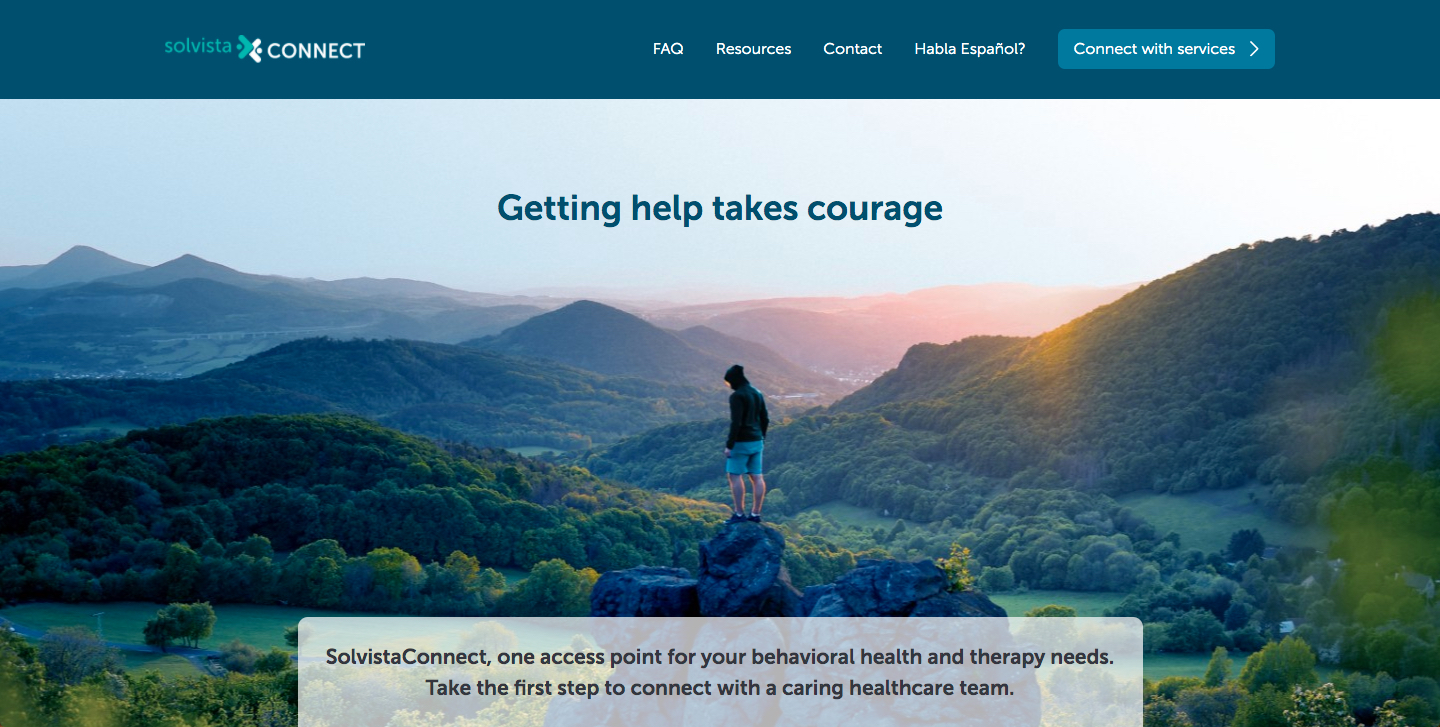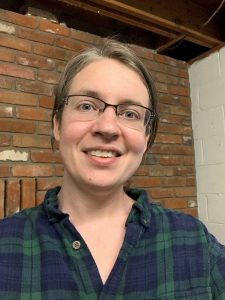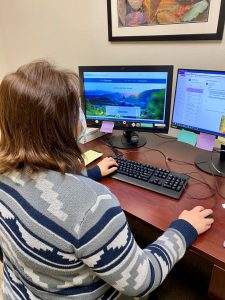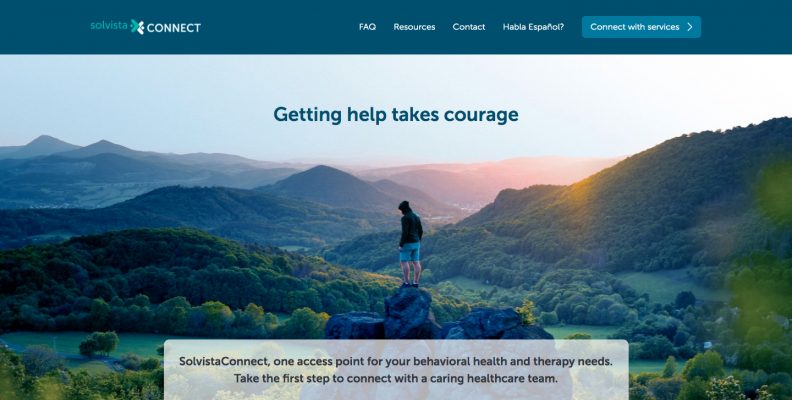Putting Clients’ Needs First
 Solvista Health covers a lot of ground. Its catchment area is vast—some 3,650 square miles with a total population of 80,644 individuals. The healthcare provider serves residents of Chaffee, Custer, Fremont, and Lake Counties in the upper Arkansas Valley region of west central Colorado. Most of the clinics’ communities are isolated from metropolitan resources due to their remote geography, which includes dozens of high elevation mountain passes. It’s been providing care to Coloradans for almost 60 years.
Solvista Health covers a lot of ground. Its catchment area is vast—some 3,650 square miles with a total population of 80,644 individuals. The healthcare provider serves residents of Chaffee, Custer, Fremont, and Lake Counties in the upper Arkansas Valley region of west central Colorado. Most of the clinics’ communities are isolated from metropolitan resources due to their remote geography, which includes dozens of high elevation mountain passes. It’s been providing care to Coloradans for almost 60 years.
The community is predominately white, apart from Lake County, which is nearly 36 percent Latino and 18 percent of individuals speak a language other than English. Solvista serves these remote counties through a model that includes leveraging partnerships with other healthcare providers and integrated local systems of care. Colorado ranks 7th in the nation for suicide mortality rates, according to 2018 data from the U.S. Center for Disease Control. The isolated high mountain regions are considered mental health hot spots. These vulnerable communities also rank high for rates of unmet mental health and substance use disorder needs, according to the Colorado Health Institute. These worrisome health indicators correlate with economic data from the U.S. Census, which ranks these counties among the poorest in the state.
Solvista Health wanted to make sure all these patients could find their way through its door, in person or online. It already had a website, designed by A-Train Marketing, that it feels good about. The site has a clear, clean design, is easy to navigate, and features images that nod to rugged mountain life.
The health provider wanted to offer new patients scheduling an appointment a similarly warm, welcoming microsite (a discrete entity or portal with a specific focus contained within an existing website). So it settled on working with the same marketing firm to create a complementary microsite that potential new patients could access by clicking on a “get started” button, which directs them to Solvista Connect.

Through multiple rounds of soliciting feedback from clients and staff alike, Solvista had long known it needed a more robust online presence. In July 2019 the provider joined a Center for Care Innovations project focused on human-centered design to help make it a reality by creating a so-called digital front door.
New clients who enter the microsite are immediately asked two questions about if they are in a life-threatening crisis (and directed to emergency services if so). They are then asked about the nature of their mental health challenge and the services they seek, and given ample room to answer questions such as: ‘Is there anything you want a therapist to know about you?” and “Is there anything you are looking for in a therapist?” There is also a page asking a prospective patient if they are interested in telehealth services, a COVID-19 adaptation that’s here to stay.
Only after these personal enquiries do health insurance questions arise. “We know that reaching out for care can be difficult, and not knowing the costs can add to that stress,” reads copy on the site. “We never want payment to stand in the way of treatment. Please provide some information about your insurance or needs to help us provide you with accurate information at your first appointment. This will help us match you with a therapist who is covered by your insurance.”
The final page gathers routine demographic data. New clients who submit the online form receive a call within two business days to help match them with the right services and clinician. Scheduling follows. This 1-2-3 step process is clearly mapped out at the start.
But don’t be fooled by the simplicity of the site or the process. It took a lot of back and forth on the back end to figure out what to ask, when, and how to maximize the patient experience and expectations, says Elliott, the project lead.
“Never underestimate the complications that come with developing a workflow. Everyone will have questions and opinions. And doing all of this in a pandemic can feel overwhelming,” Elliott concedes, discussing a project that had a lot of moving parts with a lot of different people involved in the design, workflow, and testing. “It’s good to get feedback. And then at some point you just have to give a prototype a try and be open to everything not being perfect and adapting as needed as you go.”
If You Build An Enrollment Microsite, They Will Come
There were, of course, logistical kinks in the system to work out. The electronic health record (EHR) integration has been a persistent pain point for this project, say Solvista Health staff. The provider’s current EHR product, Netsmart MyAvatar, which specializes in behavioral health, includes a patient portal but according to the Solvista CHIC project team, it is complex, lacks features the health center needed (including a client matching tool), and locks Netsmart in as Solvista’s EHR vendor.
The conundrum: Solvista needed tools that improve patient engagement now, but that were also dynamic enough to evolve to meet consumer preferences and care delivery redesign efforts into the future. The core team on this project, including the chief operating officer, chief administrative officer, administrative director, IT manager, and a clinical supervisor, assumed it would take around a week to 10 days to develop a workflow for employees. In reality it took more like a month to figure it out.
There were other hiccups along the way. DocuSign, the digital platform used for the enrollment packet, works well on computers but feels “clunky” with touch screen mobile devices, Solvista Health found. Clients got confused, sometimes submitting some forms more than once, which added to clinic costs, explains Elliott. So they are planning to switch to gravity form software, which has a built in mechanism for notifying someone when a form has been submitted and a built-in form viewer. Gravity forms also allow users to customize forms to meet their specific needs.
And some of the information gathered, clinicians reported, was relevant to customer care, though not particularly on point for clinical intake use: Patient self-reporting wasn’t a substitute for a clinical intake history. In addition, “because of the way scanned documents are located and viewed in our current EHR, it was more of a burden, timewise, for the intake clinician to access the information… than a benefit when they feel crunched for time to complete the enrollment,” Elliot says.
But these learning curves aside, the microsite, which debuted in beta form in October 2020, has been well received. A small phone survey of the first 54 clients who used the microsite in November 2020—17 clients answered questions, amounting to a 31 percent response rate—was encouraging for Solvista Health staffers, who feel they are on the right track. All respondents said that the microsite questions show that the agency cares about clients and their needs. Eighty-eight percent said they would recommend it to family or friends and almost 65 percent said the process was easy to use.

Mobile crisis clinician Cat Schleicher
Staff—including administrative assistants and intake clinicians—were also surveyed about the new workflow process. Sixty-seven percent agreed or strongly agreed the online service made the intake process faster and easier and 83 percent strongly agreed or agreed that they would recommend the process to a friend or family member. “I like that the website allows people to feel instantly connected to services,” says Cat Schleicher, a mobile crisis clinician. “It feels like: ‘Hey, I’m doing something right now.’”
Initial data show that about 40 percent of clients who begin their enrollment process on the microsite complete the enrollment packet and attend an appointment. The 60 percent who don’t seem to fall into three categories: clients who never complete the enrollment form, clients who complete the form but never return staff outreach calls to schedule an appointment, and clients who complete the form, schedule an appointment, but don’t show up on the day.
Why the drop off? Elliott has a few hypotheses. Perhaps, she says, “they reached out in a time of crisis and then things resolved naturally, and they changed their minds. Or maybe they experienced a sense of hope because they knew it was possible, or maybe another barrier popped up like a family member who wasn’t supportive of getting treatment. The hard part is that we don’t have any clear data on how many people reach out with a phone call to learn about getting treatment but then don’t complete enrollment. I would be curious to know if it was different for the website or if this is a fairly standard number when dealing with behavioral health treatment enrollment and all of the barriers that stigma enhances.” According to Elliott, these findings warrant follow-up to tease out why this drop-off is occurring.
With the advent of the COVID-19 pandemic, the importance of this digital door for clients only heightened, says Elliott. COVID created new urgency for virtual therapy options. The development of an interactive online platform that created a warm, safe, and welcoming environment has been crucial to continuity of care and attracting new clients. “The pandemic really supported this project rather than hindered it,” says Elliott, “We were working towards this kind of online platform and increased telehealth—as virtual healthcare had already been gaining traction. The pandemic just sort of sped up this work and only made it more relevant. We were accidentally ahead in this instance.”
In the case of Solvista, their efforts have allowed prospective clients to share some of their story and impressed upon these clients that the healthcare provider cares and is listening to their needs.
There are plans to streamline the existing process and build on it. In the works: Creating a tool using information from the microsite, combined with multiple other data sources, to design an automated way to facilitate a client-clinician match.




 Solvista Health covers a lot of ground. Its catchment area is vast—some 3,650 square miles with a total population of 80,644 individuals. The healthcare provider serves residents of Chaffee, Custer, Fremont, and Lake Counties in the upper Arkansas Valley region of west central Colorado. Most of the clinics’ communities are isolated from metropolitan resources due to their remote geography, which includes dozens of high elevation mountain passes. It’s been providing care to Coloradans for almost 60 years.
Solvista Health covers a lot of ground. Its catchment area is vast—some 3,650 square miles with a total population of 80,644 individuals. The healthcare provider serves residents of Chaffee, Custer, Fremont, and Lake Counties in the upper Arkansas Valley region of west central Colorado. Most of the clinics’ communities are isolated from metropolitan resources due to their remote geography, which includes dozens of high elevation mountain passes. It’s been providing care to Coloradans for almost 60 years.
